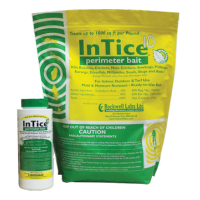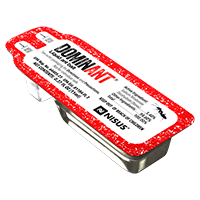We use cookies to make your experience better. To comply with the new e-Privacy directive, we need to ask for your consent to set the cookies. Learn more.
CREATURE FEATURE
PAVEMENT ANTS
The pavement ant is an introduced species that arrived in North America from Europe with settlers in the early 1800s. Today, it’s considered a significant pest across a wide range—from the West Coast to the Midwest, northeastern U.S., and even into Canada. These ants thrive in disturbed environments with minimal vegetation, making urban areas their ideal habitat. You’ll often find them nesting beneath sidewalks, driveways, patios, or building foundations—anywhere there's concrete and a bit of warmth.
Each colony typically centers around a single queen and a soil nest. Nests beneath pavement or slabs are often marked by small mounds of displaced soil, especially along cracks or expansion joints. During colder months, pavement ants frequently move indoors seeking warmth beneath buildings. They usually enter through foundation cracks or travel upward by following utility conduits. If you spot ant trails on upper floors, follow them down to ground level to locate the nest—often under or just outside the structure. Be prepared to peel back carpet edges to find their point of entry.
The most effective way to control pavement ants is through direct nest treatment. A liquid residual such as Sumari Insecticide can be applied under slabs using a crack-and-crevice tip to drench nests underneath. For ongoing protection, applying Sumari around the exterior perimeter can help prevent ants from nesting under or around the structure in the first place.
For sensitive environments—such as hospitals, schools, or residential settings where traditional sprays may not be ideal—bait options are available. InTice 10 Perimeter Bait granules combine protein, carbohydrate, and oil attractants, and are resistant to moisture and sunlight for up to 90 days. They can also be applied to indoor voids. DominAnt Bait Stations offer another effective solution. Pre-filled with an ultra-sweet liquid, they’re designed to feed large ant colonies without the risk of drowning, and each station breaks open easily without tools, making them quick to deploy.
Altogether, understanding pavement ant behavior and nesting patterns—combined with targeted treatment using the right products—can significantly improve control efforts. Whether applying a residual insecticide directly to nests or placing baits in strategic locations, success comes down to one essential strategy: treat the colony at its source.
FEATURED PRODUCTS
FEATURED PROTRAINING COURSES
Ant Biology & Management
Course Type: Technical
Time: 60 Minutes
Ants consistently rank as a top pest in the structural pest management industry. After completing this course, you should be able to determine how certain aspects of ant biology affect their management, identify the more commonly encountered pest ant species (depending on region), understand the importance of inspection, and recognize when the application of baits and non-repellent or repellent products are appropriate.
Take This Course Today




